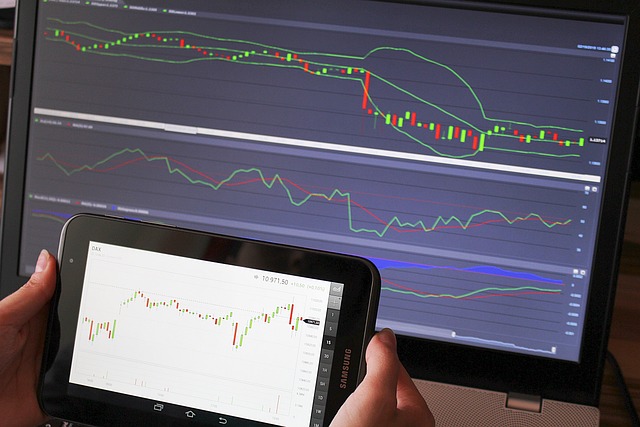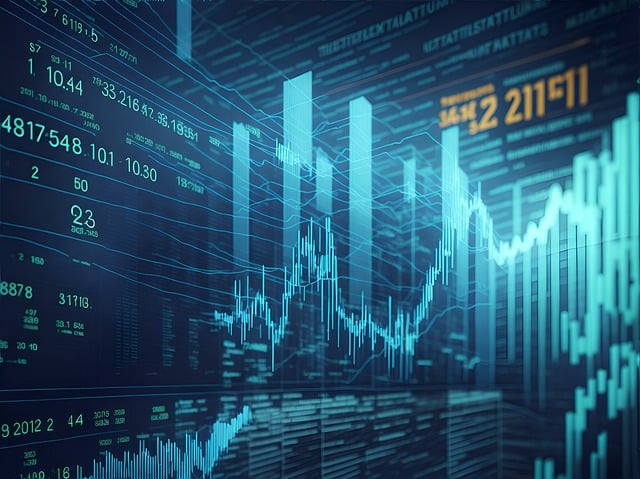The Rise of Robot Trading: Navigating the Future of Financial Markets
Author: Jameson Richman Expert
Published On: 2024-08-03
Prepared by Jameson Richman and our team of experts with over a decade of experience in cryptocurrency and digital asset analysis. Learn more about us.
In recent years, the financial world has witnessed a seismic shift towards automation, with robot trading becoming a dominant force in trading practices globally. As an individual with a keen interest in finance and technology, I have observed this transformation and its impact on both novice and professional traders alike. This detailed article aims to explore the concept of robot trading, its advantages and disadvantages, how it works, and its future implications in financial markets.

Understanding Robot Trading
Robot trading, commonly known as algorithmic or automated trading, refers to the use of computer programs to execute trades based on predefined criteria. These algorithms analyze market data and execute buy or sell orders at speeds and frequencies that humans simply cannot match. In essence, trading robots operate on the principle of efficiency, leveraging technology to capitalize on fleeting market opportunities.
How Does Robot Trading Work?
At its core, robot trading consists of various components that enable it to function effectively:
Algorithms:
The backbone of any trading robot is its algorithm, which is a set of rules programmed to identify trading signals. These algorithms can be based on technical analysis, statistical models, or even machine learning approaches.Data Feeds:
Robot trading relies heavily on real-time data feeds. These data sets provide the necessary information about stock prices, trading volumes, and market sentiment, allowing the algorithms to make informed decisions.Execution Platforms:
Once a trading signal is identified, algorithms send orders to trading platforms. These platforms execute trades autonomously, ensuring minimal latency between signal identification and execution.Risk Management Tools:
Alongside trading strategies, robots implement risk management techniques. This could involve setting stop-loss orders or employing diversification strategies to protect trading capital.
The Advantages of Robot Trading
In my opinion, the allure of robot trading lies in several key advantages that set it apart from traditional trading methods.
1. Speed and Efficiency
One of the primary benefits of robot trading is its unparalleled speed. Robots can analyze vast amounts of data and execute trades in milliseconds. This speed is crucial in a market where prices fluctuate rapidly, enabling traders to seize opportunities that would be missed otherwise. Personally, I believe that this speed gives robot traders an edge in high-frequency trading scenarios.
2. Elimination of Emotions
Human traders are often subject to emotional decision-making, which can lead to irrational trades. Robot trading removes the psychological elements from trading, ensuring that decisions are made purely based on data and predetermined strategies. I find this to be one of the most compelling aspects of robot trading, as it minimizes the risk of loss due to panic selling or euphoric buying.
3. Backtesting Capabilities
Robots offer excellent backtesting capabilities. Traders can test their algorithms against historical data to evaluate their effectiveness before deploying them in live markets. This feature allows traders to fine-tune their strategies and mitigate potential risks. In my experience, backtesting is a vital step that can save many from incurring unnecessary losses.
The Disadvantages of Robot Trading
Despite the benefits, robot trading is not without its challenges. Understanding these disadvantages is crucial for anyone considering automated trading.
1. Technical Risks
Robot trading relies on technology, and any technical glitches, internet outages, or software bugs can lead to significant losses. In my opinion, the dependency on technology for trading opens a Pandora’s box of risks that traders must be prepared for. Traders should have contingencies in place to address potential technical failures.
2. Market Changes
Financial markets are constantly evolving, influenced by economic changes, geopolitical events, and market sentiments. A strategy that was successful in the past may not necessarily yield the same results in the future. I believe that maintaining flexibility and periodically revisiting trading strategies is essential for sustainable success.
3. Lack of Human Insight
While algorithms are data-driven, they lack the qualitative insights that experienced traders can bring. Human traders can perceive broader market trends and factors that may not be reflected in the data. For this reason, I often advocate for a hybrid trading approach, where traders use robotics alongside their intuition and market understanding.

The Future of Robot Trading
Looking ahead, the future of robot trading appears promising yet challenging. Emerging technologies such as artificial intelligence and machine learning are likely to enhance the capabilities of trading algorithms, allowing for more adaptable and intelligent trading strategies. However, this growth necessitates further dialog on regulatory frameworks to ensure market integrity and protect investors.
1. Advancements in Artificial Intelligence
The integration of AI in robot trading can significantly alter the landscape. AI algorithms can learn and adapt over time, improving trading systems based on past experiences. Personally, I find it fascinating to think about the potential of AI in analyzing sentiment from social media or news to predict market movements. The convergence of technology and finance is an area ripe for exploration.
2. Greater Accessibility for Retail Traders
As technology continues to evolve, robot trading platforms are likely to become increasingly accessible to retail traders. This democratization of trading has the potential to empower individual investors, allowing them to participate in markets previously dominated by institutional players. I welcome this trend, as it cultivates a more diverse trading ecosystem.
3. Regulatory Considerations
With the rise of automated trading, regulatory bodies will face challenges in ensuring fair market practices. Striking the balance between innovation and regulation will be vital for protecting investors and maintaining market integrity. I believe that proactive dialogues and partnerships between regulators and the fintech sector will be essential as we navigate this evolving landscape.
Conclusion
In conclusion, robot trading embodies a fascinating amalgamation of finance and technology. While it offers remarkable advantages such as speed, efficiency, and the elimination of emotional trading, it also poses challenges that traders need to address. The future of robot trading is bright, and as advancements continue to unfold, it will be exciting to witness how technology reshapes financial markets. As a staunch advocate for informed and responsible trading, I urge those intrigued by robot trading to thoroughly research, test, and approach this innovative method with both enthusiasm and caution.